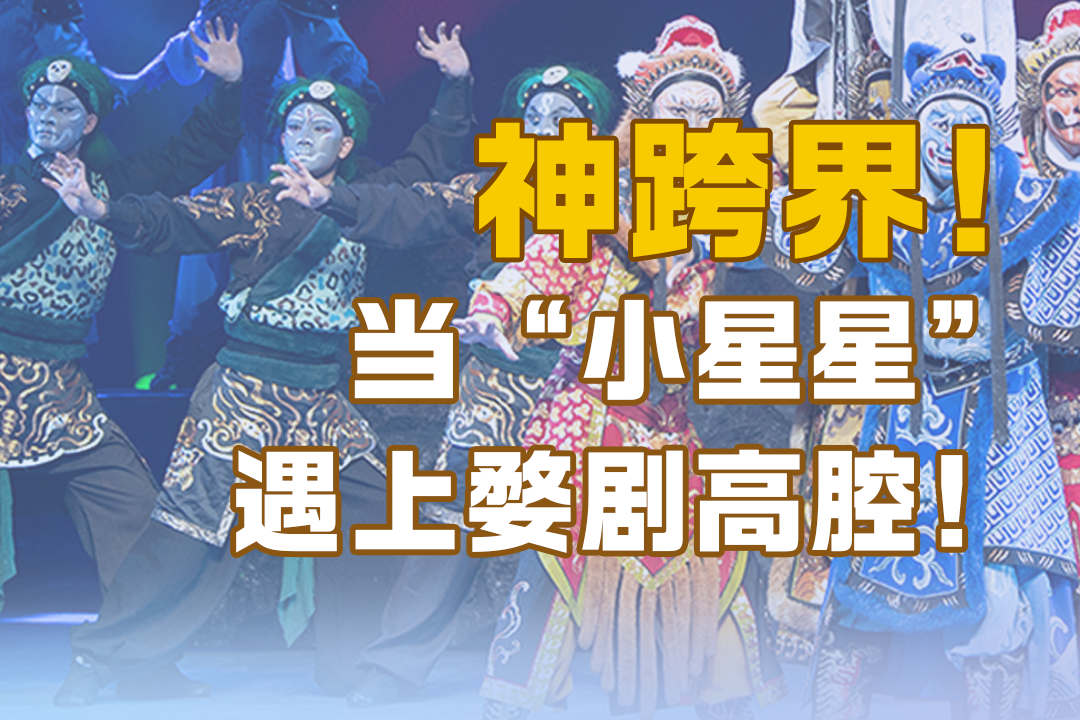Members of the Orchard Pavilion Calligraphy Society based in Hangzhou started the tradition of writing and donating couplets and other calligraphic works in celebration of Spring Festival 2012 shortly after its inception in 2011. Four masters joined hands in writing four single words 龙腾四海 (the dragon soaring over the four seas), a phrase containing the word 龙 (dragon) in celebration of the Year of Dragon. The four-character calligraphic artwork was then photographed and made into an electronic greeting card which was sent to all Chinese across the world.
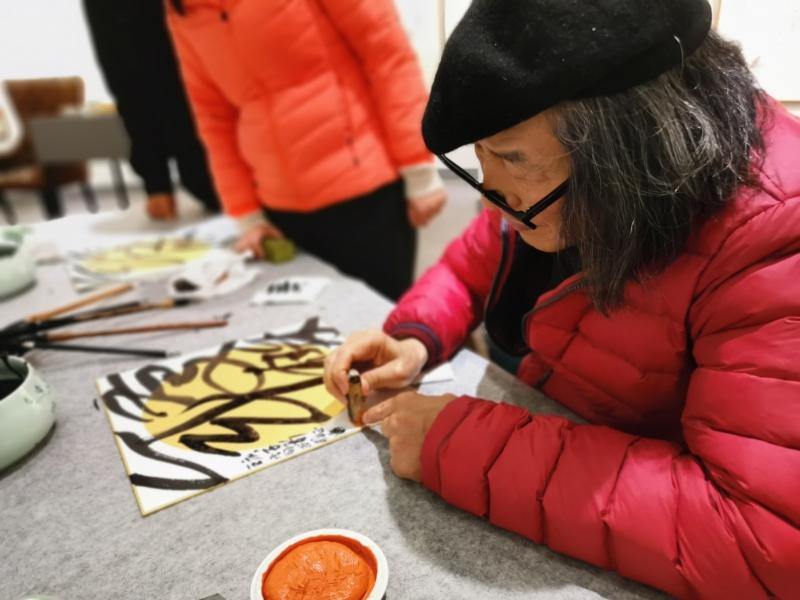
One day in January 2020, 17 members of the society met at a teahouse by the West Lake to write blessings such as 福 (fortune), 禄 (career success), 喜 (happiness), 寿 (longevity), and other auspicious words and phrases in celebration of 2020, the Year of Rat, according to the Chinese tradition. The gathering was a success. The members wrote a great number of calligraphic works.
As usual, Wang Dongling, the director of the society, took off his shoes and walked on a huge piece of paper spread on floor to write supersized Chinese characters. His red socks looked nice.
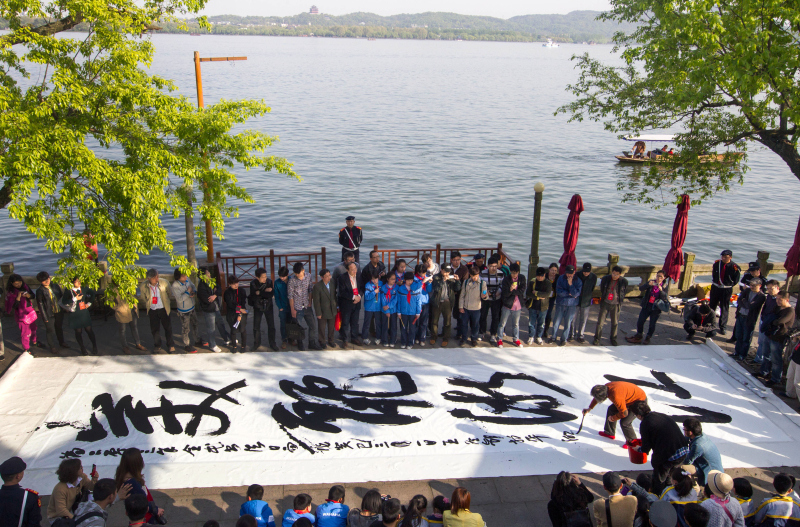
Orchard Pavilion is the sacred place of Chinese calligraphy. On the third day of lunar March, over 100 scholars and government officials met at Orchard Pavilion in Shaoxing, Zhejiang. At the garden party, they drank wine and wrote poems, which were put together as a collection called Orchid Pavilion Collection. Wang Xizhi, presumably ancient China’s greatest calligrapher, famously wrote a preface. The preface is a literary masterpiece. And Wang’s handwriting is considered by some as the greatest calligraphic masterpiece (The original is believed to have been lost. What has passed down to today is a replica made in the Tang Dynasty). Since then, Chinese calligraphers have considered visiting Orchard Pavilion in Shaoxing a pilgrimage. It would hard to imagine a celebrated calligrapher in China has never visited the holy place.
Since 2013, calligraphers in Zhejiang have been calling for establishing a national day of calligraphy on March 3. In 2013, the society held an event at Autumn Moon on the Calm Lake, a scenic highlight of the West Lake. It was the first international event of calligraphy the society held on the West Lake about two years after the lake was inscribed as a UNESCO world heritage site.
Wang Dongling and Si Shunwei, director and vice director of the society, have given lectures to primary school students on calligraphy and the story of Orchard Pavilion in the hope that some youngsters will take interest and grow up to carry on Chinese calligraphy to the future.
Wang is a calligrapher celebrated for writing supersized characters with a supersized brush pen which weighs more than 15 kilograms.
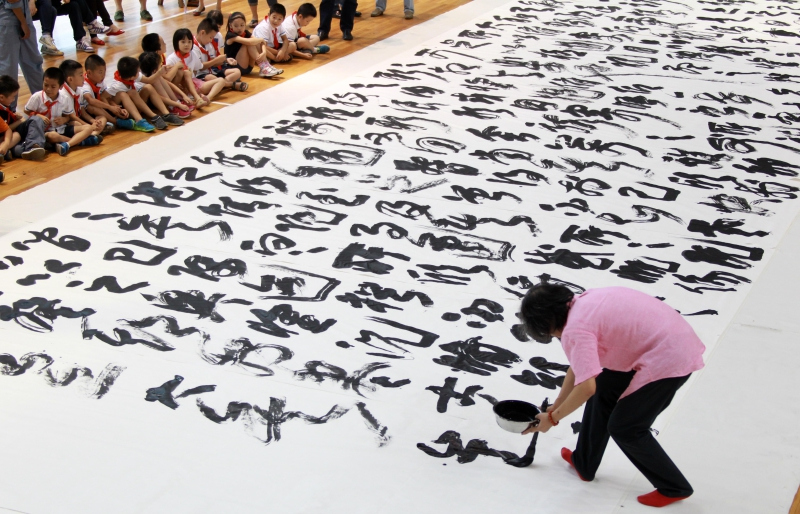
The most eye-catching artwork Wang has created in Hangzhou is probably a calligraphy mural for an Apple outlet in Hangzhou, which was inaugurated on January 24, 2015. Apple CEO Tim Cook had seen his works online. He flew all the way to Hangzhou to personally commission Wang Dongling for a huge-size calligraphy mural for the exterior of the building. Wang wrote a 28-character poem about the West Lake by Su Dongpo, a poet of the Song Dynasty. The monumental calligraphy was a main image feature of the Apple Store in Hangzhou. In 2016, Apple Computer’s new i-Pencil on iPad Pro was launched with Wang’s calligraphy.
Wang is willing and happy to communicate Chinese calligraphy with his international friends. In late October 2019, Syrian poet Adonis visited Hangzhou to launch the Chinese edition of Osmanthus, a collection of 50 China-themed poems he wrote, inspired by what he feels and sees in China. He visited Wang at his studio and they chatted for a whole afternoon. In 2017, Adonis first visited Wang at his studio. They copied To Sisyphus a poem by Adonis. Wang’s copy was in Chinese and Adonis’s copy was in the art of Arabic handwriting.
春节送“福”,是兰亭书法社的传统。这个传统始于7年前的龙年春节——社长王冬龄和副社长赵雁君、童亚辉、斯舜威合写“龙腾四海”四个大字,分别以草书、行书和魏碑字体书写,构思精巧。书法社以这幅字为素材,做了一个电子贺卡,通过网络向全球华人拜年。之后,春节送“福”的活动就延续了下来。
春节一到,家家户户都会在门窗上贴“福”字。春节贴“福”的传统,历史悠久。南宋周必大《玉堂杂记》载:“除日,更春帖、柱联、门额,于堂轩楣枋贴福、禄、寿、一财、二喜等字。”
可以说,以狼毫沾染浓墨,在红彤彤的纸上写下“福”字,是中国人迎接新年最传统、最具特色的方式。
不久前,兰亭书法社联合中国美院现代书法研究中心、钱江晚报、《文化交流》杂志在杭州举行了“新春书福·文化惠民”活动,以迎接吉祥鼠年。王冬龄、赵雁君等17位书法家挥毫,写下一张张墨香浓郁的祝福。
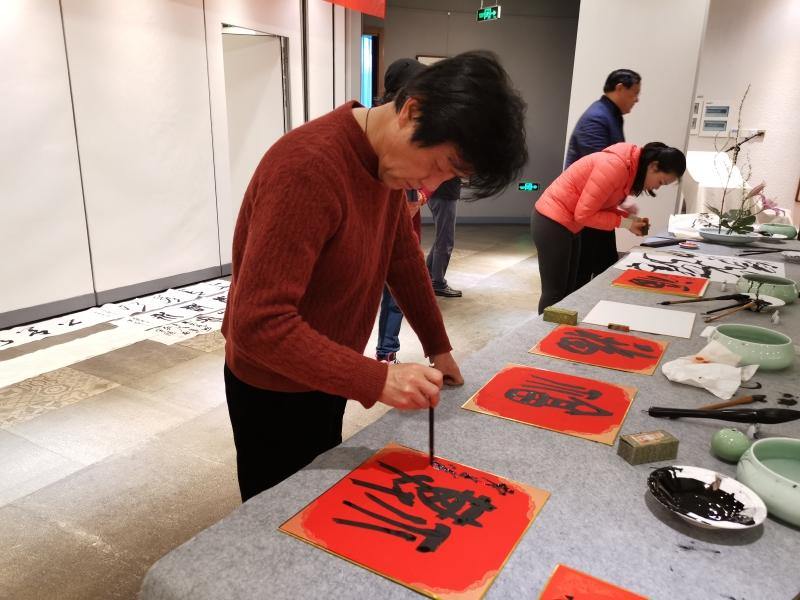
从“福”写到“庆余年”
雅集当天,书法家们济济一堂,在西湖边饮茶、写字。此次写福的书法家有王冬龄、赵雁君、童亚辉、斯舜威、王水法、王新元、高法根、沈浩、韩天雍、宋涛、花俊、韩祖耀、张爱国、鲁大东、储楚等。
兰亭书法社社长王冬龄在现场很开心。他穿着红袜子,还穿了件红色羽绒服。他说,这是一次文化惠民活动,同时也是一次文人雅集。
王冬龄介绍,到场的书法家大都是博士毕业,造诣很深,“每个人有各自擅长的字体,真草隶篆行都有。而且不同书法家写同一书体,风格也不同。”
雅集现场,十几位书法家各自落笔,各擅胜场。王冬龄写草书、赵雁君写行书、斯舜威写隶书、韩天雍写甲骨文……
童亚辉、王水法、王新元、高法根四位并排,笔势如飞;斯舜威的隶书写起来比行书慢,他也不急,花功夫细细地写;鲁大东低头沉静,慢慢写着甲骨文的“福”、瘦金体的“福”;沈浩、花俊、储楚也笔走龙蛇,一张张写不停。宋涛则一字排开10张纸,一口气写完。这10个“福”字各不相同:有传承“二王”()的传统福,有隶书的福,有汉砖的福,有大篆的福。其中,大篆的“福”中,有的示旁在左,有的示旁在右,形态各异,气势也各异。
王冬龄写到兴头上,“庆余年”三个草书大字,挥毫落纸,流畅如云,赢得一片叫好。
《庆余年》是2019年的热播网剧。事实上,“庆余”二字出自《周易》“积善之家,必有余庆”,意为修善积德之家,必有吉庆不尽。《红楼梦》第五回的一首散曲《留余庆》、杭州的中医店“庆余堂”用的也是此意。书法家们书下“庆余年”,是对2020年寄予美好愿望。
书法走近大众生活
春节送“福”,是兰亭书法社的传统。
“兰亭书法社成立这么多年,一直坚持‘立社为公,学术为宗,服务大众,中西交融’的宗旨。”社长王冬龄说,对书法家们来说,每年给大家送“福”是很有意义的事情。
兰亭的故事,想必大家都耳熟能详了。东晋永和九年三月初三,40余位文人雅士齐聚绍兴会稽山阴之兰亭,作诗抒怀,集成《兰亭诗集》,集子之序,便是王羲之所作、名垂千古的《兰亭序》,而兰亭也成了中国书法之图腾。
2011年,在兰亭故事的发源地浙江,兰亭书法社成立。它秉承传统书法文化的文脉,发挥浙江书法高地的优势,赋予“兰亭”两字以新生,探索当今社会的书法新出路。
2012年春节前夕,书法社就开始了送“福”活动。当年是龙年,社长王冬龄和副社长赵雁君、童亚辉、斯舜威合写“龙腾四海”四个大字,分别以草书、行书和魏碑字体书写,构思精巧。书写过程,在场的观众兴奋围观。书法社以这幅字为素材,做了一个电子贺卡,通过网络向全球华人拜年。之后,送“福”活动就成了书法社每年的传统。
从2013年开始,浙江书法家就呼吁,在网络时代提倡全民书写,倡导设立“全民书法日”。兰亭书法社副社长斯舜威说,“全民书法”并不是要求人人当书法家,而是和全民健身一样,享受过程,“通常意义上的写书法,要准备文房四宝。但是书写的范围很广,硬笔、地书,甚至用鼠标书写——只要是写——都可以享受自由快乐。”
兰亭书法社积极倡导每年农历三月三作为“全民书法日”,并配套举办了一系列书法活动。比如,2013年在杭州平湖秋月的书法交流活动,那是一次站在世界文化遗产西湖这一舞台上的国际性展现,在全面深入推广书法艺术之时,也为西湖带来活力涌动的当代文化意蕴。
努力为书法传承奔走,除了倡导全民书写,兰亭书法社还希望书法从娃娃抓起。
王冬龄、斯舜威等书法家还走进永天实验小学。鼎鼎大名的书法家向小学生讲解书法,分享《兰亭序》的故事。尽管在短短时间里,孩子们未必能懂得书法的精髓,但他们的心中多少留下了向往书法之美的种子。
让中国书法走向世界
兰亭书法社社长王冬龄的书法以大字草书闻名。多年来,他致力于中国书法的创新和推广。除了“全民书法”,在对外交流上他也做了很多。1989年,他应邀赴美国讲授中国书法,被明尼苏达大学等学校聘为客座教授。他去过很多国家和地区,不遗余力地推广中国书法,让世界了解中国书法。
2015年年初,王冬龄曾应邀为杭州西湖苹果旗舰店写巨幅书法:苏轼的《饮湖上初晴后雨》。潇洒的草书与西湖的风光非常契合。这幅字在店铺的大玻璃墙上展出,一时引发了不少媒体和游客的围观。
苹果公司CEO库克前来杭州拜访,向王冬龄请教中国书法知识。在王冬龄的示范下,库克写下了一个楷书的“美”字。围绕书法,两人聊得很开心。临别,王冬龄又教了库克写下了草书的“再见”。
王冬龄的朋友圈里,外国的汉学家、艺术学者不少。他乐于与外国艺术研究者交流。各种层次和深度的交流,只要关于书法的,王冬龄都乐此不疲。
2019年10月底,叙利亚著名诗人阿多尼斯从法国来中国交流。他去了王冬龄工作室——这是继2017年之后两人再次会面。2017年,两人分别用中国书法和阿拉伯书法手抄阿多尼斯诗歌《致西西弗》。这次,他们在王冬龄工作室,聊中国书法与阿拉伯书法,又从鲁迅聊到家庭教育,聊了一下午。“他()是很想了解中国文化的,对中国书法很感兴趣。”王冬龄说。
除此之外,美国旧金山亚洲艺术博物馆馆长许杰、比利时汉学家史蒙年、法国的柯乃柏、日本的稻村云洞……也是王冬龄朋友圈的熟人。
王冬龄倡导“大字写世界”,书法创作空间从桌案转换到更大空间。他常常穿着红袜子,拿着拖把一样的数尺长的大笔,在铺展在地上的巨幅纸上书写。
书法家王冬龄在站在历史的河边,眺望书法的未来。他说:“21世纪给中国书法艺术的发展带来了新的考验与机遇。”
2019年,第四届“书非书”杭州国际现代书法艺术节在中国美院美术馆召开。王冬龄以一副大字草书对联参展,“书法有当代性,我致力于书法与当代艺术的对话。”
他担任主任的现代书法研究中心,宗旨就是把书法推向世界。现代书法研究中心每年冬至都有雅集活动,这体现了传统;中心有很多来自国外的学者,又体现了现代。
“创新书法艺术,让中国书法走向世界,让更多人理解书法。”这是王冬龄的愿景。



